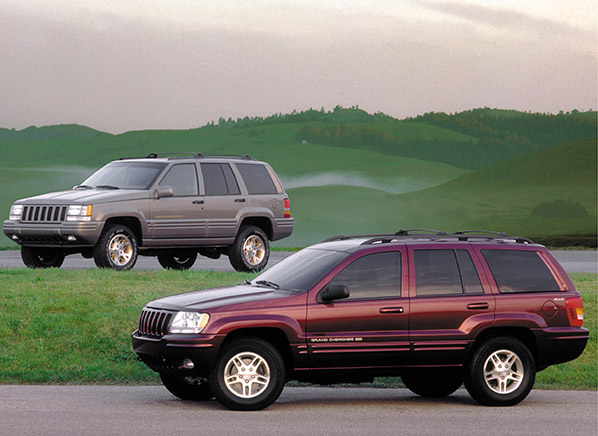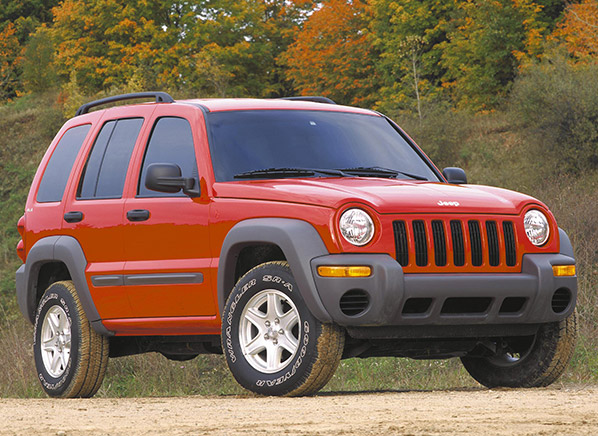
Earlier this week, the National Highway Traffic Safety Administration (NHTSA) requested that Chrysler initiate a safety recall of the 1993-2004 Jeep Grand Cherokee and 2002-2007 Jeep Liberty to address a performance and design defect. NHTSA is calling for Chrysler to improve the rear-crash protection in approximately 2.7 million vehicles. In a widely distributed press release, Chrysler gave a rare response and effectively said, "No."
Chrysler's position is that these vehicles are safe and not defective. NHTSA and safety advocates disagree.
Both Chrysler and NHTSA agree that the Jeeps in question met federal safety standards in place at the time. But that doesn't mean NHTSA, in its own words, can ignore deadly problems. (Search for recalls on your car.)
The NHTSA safety investigation into the Grand Cherokee was launched in 2010 in response to a petition by the Center for Auto Safety (CAS), one of the nation's oldest safety lobbying groups, after CAS shared analysis that found an unusually high rate of fatal fires in Grand Cherokees in the federal Fatality Analysis Reporting System (FARS) database than other comparable vehicles. In fact, CAS Executive Director Clarence Ditlow said there had been 10 times as many fire deaths in Grand Cherokees as in Ford Pintos, which were infamously recalled after 27 people died in fires following rear-end collisions.
To learn more about car safety, visit our guide to car safety.
 In its official correspondence with Chrysler released this week, NHTSA states that its Office of Defects Investigation (ODI) found that the Grand Cherokee and Liberty are "poor performers" relative to competing SUVs on the market at the same time, although its death rates per millions of registered vehicle years (MRVY) are not as dramatic as the CAS figures. The numbers get complicated, because they include both deaths attributable to rear-impact crashes and those that are caused by post-crash fires due to fuel leaks. In total, CAS estimates that there have been 246 fatal fire crashes with 350 deaths and at least 112 deaths due to fire. In covering this developing story in the past, we pointed out that Jeep Grand Cherokee fire investigation shows how accident statistics are open to interpretation. (That said, Safety Research & Strategies brings the numbers and tragic accounts to life.)
In its official correspondence with Chrysler released this week, NHTSA states that its Office of Defects Investigation (ODI) found that the Grand Cherokee and Liberty are "poor performers" relative to competing SUVs on the market at the same time, although its death rates per millions of registered vehicle years (MRVY) are not as dramatic as the CAS figures. The numbers get complicated, because they include both deaths attributable to rear-impact crashes and those that are caused by post-crash fires due to fuel leaks. In total, CAS estimates that there have been 246 fatal fire crashes with 350 deaths and at least 112 deaths due to fire. In covering this developing story in the past, we pointed out that Jeep Grand Cherokee fire investigation shows how accident statistics are open to interpretation. (That said, Safety Research & Strategies brings the numbers and tragic accounts to life.)
Chrysler disputes the higher number, maintaining that that their vehicles are as safe as comparable vehicles. The company states, "For the vast majority of the incidents cited by NHTSA, the crash force was far in excess of the rear crash fuel leak requirements in place at that time." Further, Chrysler claims that the NHTSA analysis does not consider all available data.
Historical context
After the Ford Pinto safety scare in the 1970s, manufacturers moved to placing most fuel tanks in less vulnerable locations than behind the rear axle. Based on a 1993 a study of fire-related deaths among 1977-1989 models published by the American Journal of Public Health, this effort had a substantial effect on reducing deaths.
NHTSA states that in looking at 74 vehicles in the 2002 and 2003 model years, only four placed the fuel tank behind the rear axle: Ford Mustang, Ford Crown Victoria, Jeep Grand Cherokee, and Jeep Liberty. These Jeep designs went against the industry trends and configuration of other Chrysler products. NHTSA points out that because these Jeeps have a higher ride height than conventional passenger cars, their fuel tanks are especially vulnerable to rear impacts from cars.
In a letter to Chrysler Group and Fiat, Ditlow points out, "There has not been a single confirmed fire death since Chrysler moved the fuel tanks from behind the rear axle in 2005 for the Grand Cherokee and 2008 for the Liberty."
Safety advocate Ralph Nader had proposed a solution back in 2011: "Fiat needs to recall the Grand Cherokee and remedy the fuel tank defect by installing (1) an optional frame rail reinforcement bracket on the 1993-1998 Grand Cherokee, (2) optional skid plates on all 1993-2004 Grand Cherokees that do not have them, (3) an effective check valve system to shut off the flow of gasoline if the filler hose is pulled out of the fuel tank or filler neck, and (4) additional shields to protect the fuel tank from sharp objects in the crush zone impacts."
Although it has issued a press release, Chrysler has until June 18th to file an official written response to the NHTSA request.
The bottom line
While the organizations debate data and research methodology, the clear message from NHTSA and CAS is that these Jeeps present a greater fire risk than competing models. Beyond this issue, neither SUV is a good used-car purchase due to reliability concerns and, in the case of the Liberty, a low overall test score. The current, all-new Grand Cherokee, however, is an impressive vehicle that is Consumer Reports Recommended. And as mentioned above, its fuel tank is forward of the rear axle.
This is a good reminder for consumers to thoroughly research new and used cars when shopping, prioritizing those that excel in crash tests and dynamic tests, such as braking and accident avoidance. While unforeseen problems may arise over time, it is always wise to avail yourself of all available information before buying.





